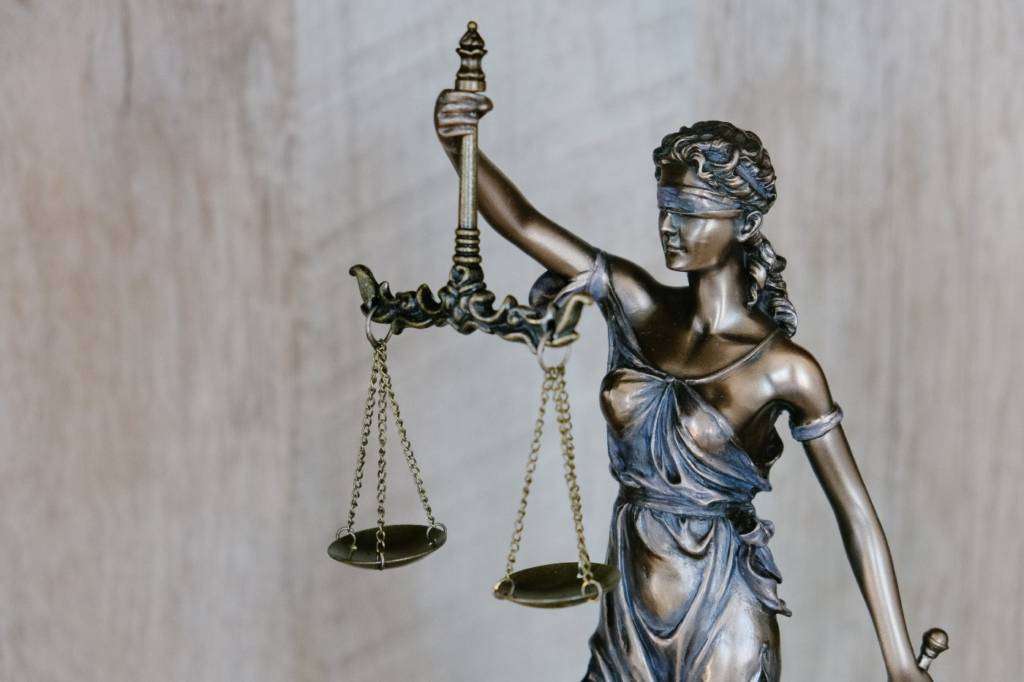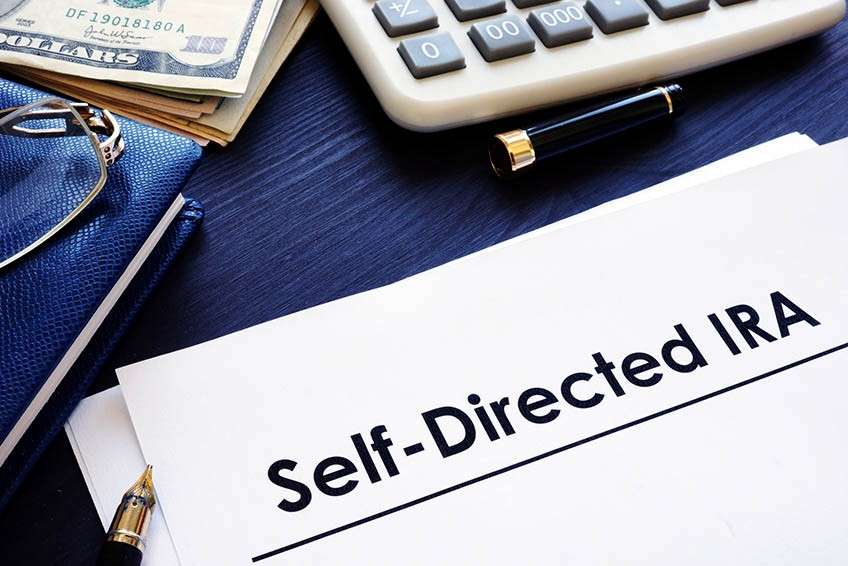What are the Top IRS Rules for Self-Directed IRAs?
A self-directed IRA (SDIRA) is in many ways similar to both a traditional IRA and Roth IRA. In fact, you can set up an SDIRA to function as either one.
These plans help save for retirement while providing tax benefits unseen in other investment products.
In exchange for these benefits, however, there are certain IRS rules for self-directed IRAs that an investor must consider before choosing an investment strategy.
How Does a Self-directed IRA Differ from Other IRAs?
The main difference between an SDIRA and a traditional or Roth IRA is the investment options.
SDIRAs allow you to invest in assets not necessarily traded openly in the secondary markets, such as partnerships, real estate properties, and even precious metals. If you can find a custodian willing to accept the plan’s terms, you can invest in almost anything (within reason, of course).
This wider range of permitted investments allows an investor to diversify an SDIRA portfolio beyond that provided by run-of-the-mill stocks and bonds. The increased high-risk/high-reward exposure is often attractive to investors who are still several years from retirement and have the time to recover from market dips.
What Are You Not Allowed to Put into a Self-Directed IRA?
While there are many asset types available to you, not everything is allowable in an SDIRA. IRS rules for Self-Directed IRAs do exclude certain investments. Three major exclusions are as follows:
Life Insurance
You are not allowed to buy whole, variable, or universal, life insurance products through an SDIRA (or any IRA, for that matter).
Your Home
While real estate properties, in general, are permitted, you are prohibited from investing SDIRA funds in any property that you either use personally or from which you benefit financially. This includes your permanent residence, vacation homes such as summer beach houses or cabins, and any rental properties registered under your name.
If you do manage a rental property, consider doing so via a separate business account to ensure that money remains legally separate from your personal SDIRA.
High-Risk Derivatives
SDIRA custodians will typically permit standard financial derivatives such as futures contracts on commodities or call options on equities. However, higher-risk derivatives that carry an unhedged risk component (meaning that exposure is unlimited) are not allowed by the IRS.
Who is Eligible for a Self-Directed IRA?
IRS rules for self-directed IRA eligibility are the same as those for either a traditional IRA or Roth IRA (again, depending on which type you choose).
There has never been an age limit for contributing to a Roth IRA. While contributions to a traditional IRA were in the past restricted to those investors under the age of 70 ½, that rule changed in 2019 with the passing of the SECURE Act. Now, you can make contributions at any age so long as you are employed.
There is also no age restriction for opening a new traditional IRA provided that the source of funds for the plan are assets being transferred from another IRA or other eligible retirement plan.
In the case of either IRA type, you must be earning taxable income to make contributions. The annual contributions limits for 2021 for both IRA types are $6,000 for investors under the age of 50 and $7,000 thereafter.
Who is Disqualified from a Self-Directed IRA?
The following would-be investment participants are defined as “Disqualified Persons” for purposes of your SDIRA:
- You (you cannot do business with yourself).
- Your spouse/partner.
- Your children.
- Your grandchildren.
- Any advisors or fiduciaries involved with your SDIRA.
- Any business entity in which you own 50% or more of the voting stock.
Top Five IRS Rules for Self-Directed IRAs
Like other IRAs, the IRS imposes certain rules on SDIRAs in return for their preferential tax treatment. In return, certain IRS rules for self-directed IRAs apply. Five of those rules are as follows:
1. The Prohibited Transaction Rule
Investors rarely find themselves involved in “prohibited transactions” because most IRAs are invested in traditional equity and bond portfolios. These investments are (typically by default) unallowed in transactions that would fall into this category.
However, when a prohibited transaction does occur, it is likely a result of dealings with a disqualified person — namely themselves.
This is commonly referred to as a “self-dealing” transaction and is often unintentional. While this blunder can happen in many ways, the most common (and as mentioned earlier) involve turning a profit on SDIRA-owned properties (such as a rental unit) or using funds to invest in a company that you at least partially own.
2. Contribution Restrictions
As discussed previously, an SDIRA follows the same rules as do traditional and Roth IRAs regarding contribution amounts and timing. Unlike a traditional or Roth IRA, however, all contributions and required minimum distributions must be made through the IRA directly — not into or from the IRA’s bank account.
3. Reporting Requirements
The IRS requires the owner of an SDIRA to complete and submit the following three forms:
- Form 990-T. This is used for filing any potential Unrelated Business Income Tax (UBIT) or Unrelated Debt-Financed Income (UDFI).
- Form 5948. This form is used to disclose the market value of the SDIRA as well as a record of the prior year’s contributions.
- Form 1099R. This reports any distributions you receive from the SDIRA.
4. Using Your Self-Directed IRA as Credit
You cannot use an SDIRA to apply for a line of credit, including a basic credit card. Applying for credit involves making a legally binding promise that you will make good on repayment obligations. The IRS prohibits an SDIRA’s exposure to this practice.
5. Tax Considerations
While both a traditional IRA and Roth IRA provide a tax shelter while funds remain inside the account, this is not always the case with an SDIRA. More specifically, there are two possible (and uncommon) situations when taxes are owed before a withdrawal from the plan.
The first is the UBIT (as mentioned previously) which is a tax imposed on SDIRAs that are affiliated with an active business entity.
The second is the UDFI, which is a tax on any income earned from leveraged funds (i.e., borrowed money).
Self-directed IRAs can be a great way to diversify your retirement portfolio. They allow investment in products not available in more traditional investment plans while still preserving standard IRA tax benefits.
However, IRS rules for self-directed IRAs can be tricky, easy to miss, and — if not followed properly — may negatively impact the tax status of your investments.
Companies like Horizon Trust have a team of SDIRA experts dedicated to educating our clients on SDIRA rules and procedures, as well as providing seamless account set-ups and top-notch custodial services.
Top 7 Dos and Don’ts of Self-Directed IRAs in 2023 and Beyond
Without a doubt, you cannot work forever. Like it or not, you reach an age where, regardless of how skillful or productive you are at work, you have to step aside and let a younger generation take over.
Planning for the future and your years after retirement is essential. While you’ve been used to receiving a weekly paycheck, once you retire, this is no longer the case. So while you’re productive and earning, you need to plan for this eventuality.
This is where a self-directed IRA comes in.
What You Need to Know About Self Directed IRAs
A self-directed IRA is a retirement account that gives an individual control over their investment choices. An SDIRA can either be a Roth IRA (where you can take distributions tax-free) or a traditional IRA.
In simple words, it is a retirement saving plan that provides alternative investments such as real estate, life insurance, retirement savings, tax-deferred certificates, and tax advantage accounts among others.
Normally, banks act as custodians of the SDIRA account while the owner is given the driver’s seat to take control and hold the power to decide on their retirement plan.
Dos and Don’ts of SDIRAs
1. Do Start Early
Although an SDIRA is a saving account, it is also an investment account that adds value to your contribution. Just imagine a normal saving account and how the compounding returns increase your money.
The same concept applies to SDIRA contributions where you put your money away and have a self-selected method of compound returns on your money. On that note, if you happen to have a Roth IRA account, you get a tax break, as it offers growth and retirement withdrawals that are tax-free.
Thus, if you start to make self-directed IRA contributions early, your compounded returns will be high, and you will get a larger tax break.
2. Do Diversify with a Focus on Crypto and Real Estate
With your SDIRAs account, you take control of deciding what investments to take, and crypto and real estate are part of the alternative investments that we offer with an SDIRA. Your self-directed IRA may purchase real estate or property which becomes an asset for this account.
This is one of the popular investment choices for a self-directed retirement plan, and if your account does not have sufficient funds, a bank may make a loan arrangement and the property becomes the collateral. The intended property purchase should not be a prohibited transaction.
3. Do Check Out the Backdoor Roth IRA
As the word “backdoor” suggests, this SDIRA involves making an administrative arrangement with your custodian to sidestep income limits. This means your money is put into a traditional IRA, then some tax is paid and it’s converted into a Roth IRA.
The benefit is that even if you do not qualify to contribute to the IRA because of your income, you may make negotiations through back door. This is pretty sweet, as your money grows tax-free even when you will be taking out your money in retirement.
4. Don’t Check Out the Backdoor Roth IRA
The backdoor Roth IRA can both benefit or hurt your SDIRA depending on your tax bracket. If you are a high-income earner, a Roth IRA could likely hurt your finances in the account. This is something that the government uses to increase your tax.
This is because you will be paying taxes on the year you make Roth IRA contributions and it will be higher than a tax-deferred account in a traditional IRA.
5. Do Co-Investing for Expensive Assets
Think about alternative options, like having gold and silver as some of the assets that you may hold in your IRA account.
Even though there is some risk involved in dealing with these precious metals, it is a good choice to co-invest in these expensive assets given their unique stability, regardless of the economic volatility compared to other assets such as mutual funds and stocks.
6. Do Choose Your Custodian Carefully
The first task of investing in a self-directed IRA is to find the right custodian and the right investment alternatives that fit your retirement plan.
Given that you have an idea of the IRA and the type of investment you want, you may consider the following factors while looking for a self-directed IRA custodian:
- Ease of account maintenance and setup: How easy it is to open and maintain an SDIRA account with a custodian
- Fees: For administration, setup, and transaction cost
- Customer service: Efficiency in terms of helping a client with account issues
- Checkbook control: Whether a client can invest or direct investment by just writing a check
- Investment options: Ability to offer alternative investment options
7. Don’t invest in Prohibited Investments and Transactions
Under SDIRA, there are some prohibited investments, such as collectibles of tangible personal property such as rugs, stamps, art, gems, alcoholic beverages such as fine wines, antiques, and some precious metals.
Among the transactions prohibited are using an IRA for personal financial gains that are smaller than the available tax benefits. Simply put, self-dealing transactions are prohibited by the IRS.
Plan Ahead with an SDIRA
Securing your financial future in retirement is not difficult. If you start a plan with a self-directed IRA as early as you can while you’re still working and earning, you’ll be well ahead of the game, knowing that your golden years will be free of worry from financial woes.
Analyzing the Crypto Market: 4 Factors and Developments to Watch
For years, cryptocurrencies have fought their way to become mainstream financial instruments. However, 2020 brought significant changes to crypto markets that go beyond bigger-name recognition. Major companies and financial institutions began to take a closer look at Bitcoin as a long-term asset. For example, Tesla invested $1.5 billion in Bitcoin.
And it wasn’t alone. Financial institutions such as the U.K.-based Ruffer Investment Management have decided to invest in Bitcoin, as well. In Ruffer’s case, its slice of the cake amounted to $745 million in Bitcoin.
If you’re reading this, you likely follow Bitcoin pretty closely. It’s the best-known cryptocurrency in the world, but it’s far from the only viable option for individual investors. Here, I’ll outline some important factors to consider when it comes to analyzing crypto markets.

How To Spot Cryptocurrency Trends
Traditionally, investors rely on three types of analysis when deciding where to put their money. Let’s break down what those are:
• Technical: This kind of analysis focuses on detecting trends by looking at historical data and price movements. For example, when an institutional investor with big-name recognition announces a large investment in Bitcoin, the price often goes up.
• Fundamental: Fundamental analysis doesn’t focus solely on data; it also looks at what companies are doing and how they’re being managed. A crypto example would be Ripple, which is still embroiled in a lawsuit with the Securities and Exchange Commission. This means it probably won’t be a good year for the currency.
• Public perception: This is where articles, opinion pieces, and even tweets come in. If public perception of an asset, such as a cryptocurrency, is good, then its value might be headed up.
As an individual investor, relying on technical analysis is difficult because you likely don’t have access to the same sophisticated tools and comprehensive data as investment firms and hedge funds. That means if you’re trying to predict trends, you’ll generally want to analyze the fundamentals and public perception.
Four Cryptocurrency Developments To Watch
Understanding where the cryptocurrency market is headed and what is currently happening in it will help you make better financial decisions. Here are four cryptocurrency developments to watch.
• PayPal’s involvement in the space: PayPal debuted its crypto purchasing service in 2020 for U.S. users. The service has stated its intention to expand into international markets in 2021, making it easy for more of its users to invest in cryptocurrencies. That could translate to surges in the price of the cryptocurrencies the service supports, such as Bitcoin, Bitcoin Cash, Ethereum, and Litecoin. At the moment, PayPal seems poised to double down on its investment by purchasing Curv, a crypto custody firm.
• Ethereum’s rise: Ethereum surged over 450% in 2020 and has continued to rise in 2021. In early February, the CME Group opened the floor for trading on Ethereum futures, which could fuel institutional investment and speculation in the market.
• Regulatory interest: As more money finds its way into the crypto markets, it’s only a matter of time until new regulations are created. Cases like the one against Ripple Labs are a clear signal that regulatory entities keep a close eye on the markets. Moreover, the U.S. Treasury Department recently issued a proposal that would deem some cryptocurrencies as monetary instruments, increasing recordkeeping requirements. If regulation becomes aggressive, that could scare away individual investors, but perhaps not institutional ones, who would gain more control over crypto markets.
• Continued market volatility: Despite significant institutional adoption, cryptocurrency markets are more vulnerable when it comes to “emotional” investing. And despite major cryptocurrencies such as Bitcoin and Ethereum being bullish, the market remains highly volatile partly due to the number of options open for investing. Until there is more mainstream crypto adoption, it’s unlikely for the markets to stabilize.
Keep Your Finger On The Pulse
Unless you have access to massive amounts of historical data, day trading cryptocurrencies is generally not recommended. Instead, investors will want to focus on fundamental analysis and invest in solid cryptocurrencies. If you invest in cryptos with a strong foundation for the long term, you’ll have a better chance of seeing earnings.
To be a savvy crypto investor, you need to keep up with the latest news in the market and monitor rising coins to decide if they’re worth your time or they’re just time bombs. If you can do that, you’ll be well ahead of the curve.
Consult with a licensed professional for advice concerning your specific situation.



